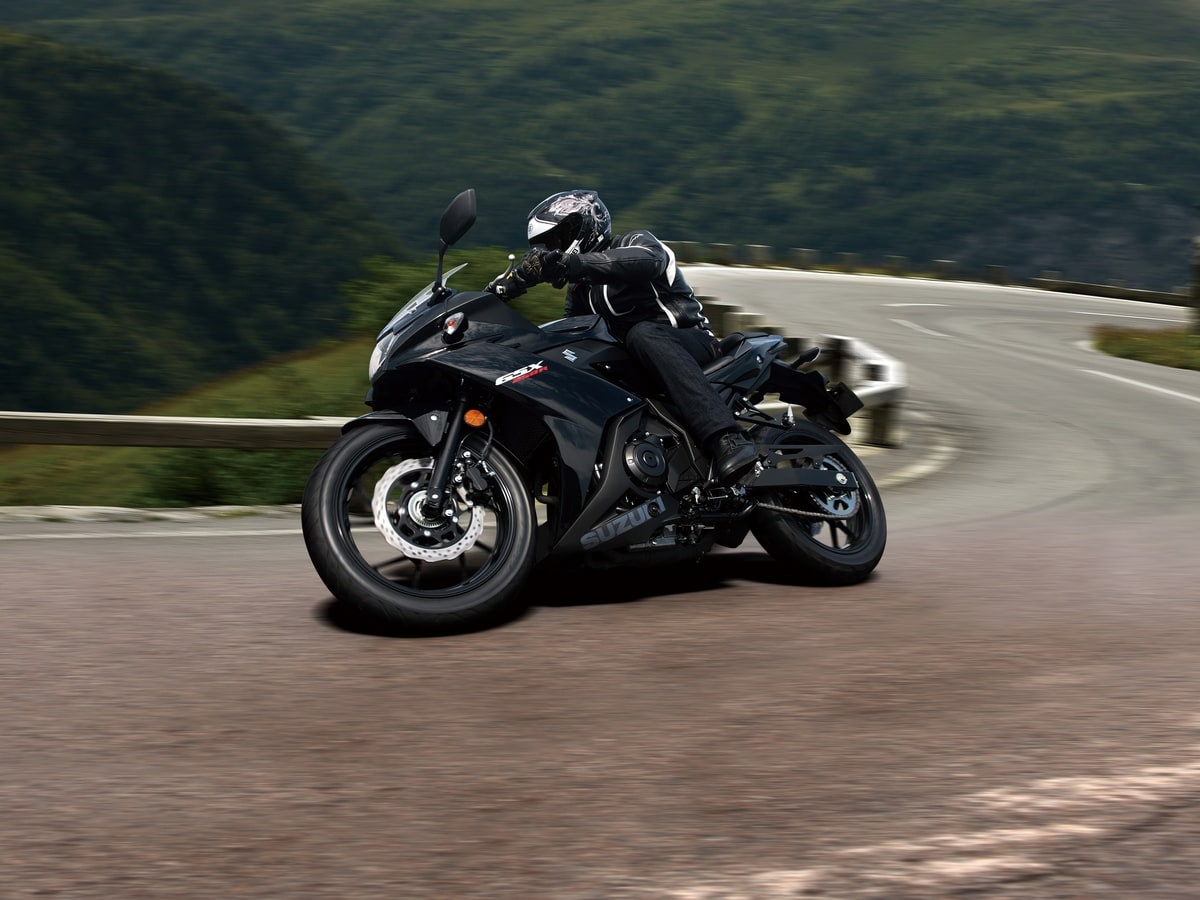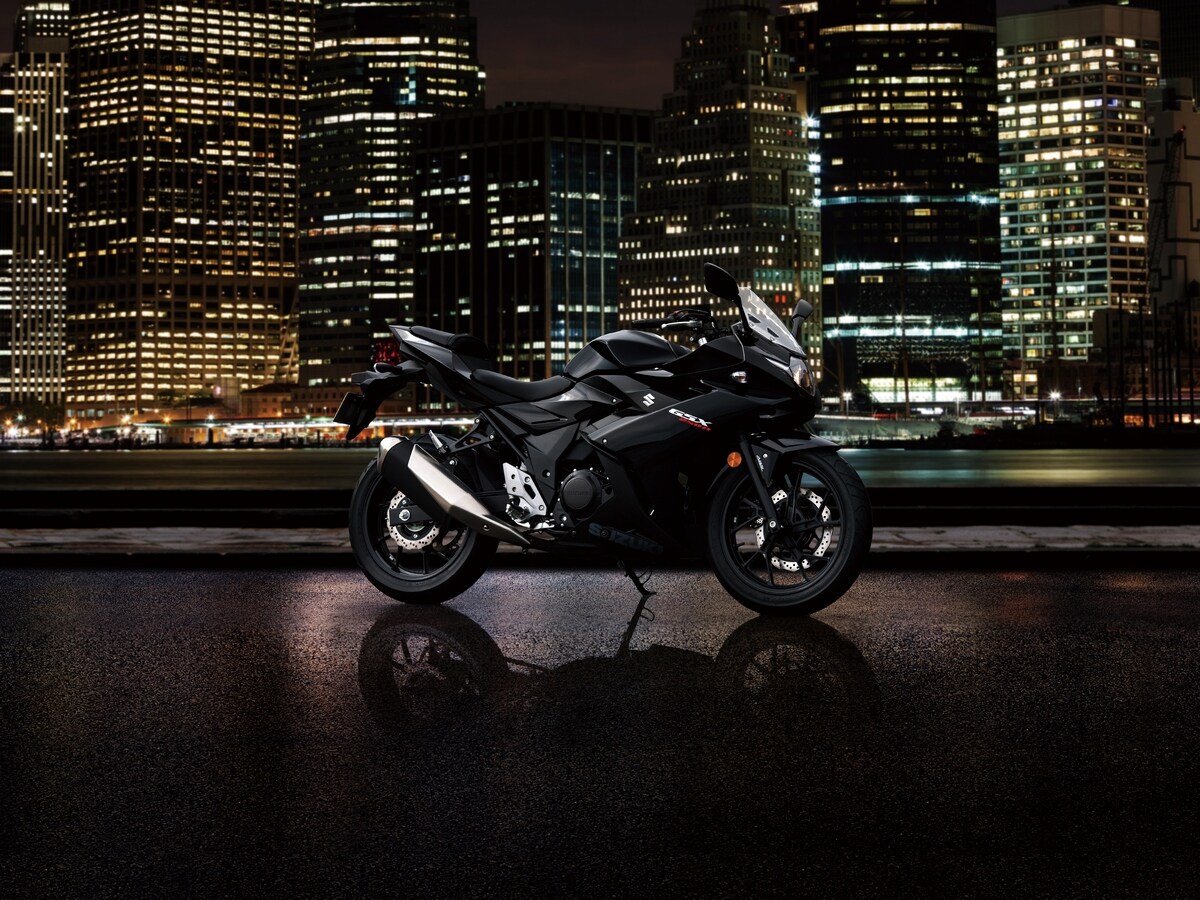Entry-level motorcycles, once shunned by manufacturers busy focusing on their high-profit-margin Boomer clientele, are once again all the rage. Virtually every major manufacturer offers some sort of streetbike in the 125 to 500 range: There are entry-level nakeds, adventure tourers and sport bikes. Starting this spring, there’s even a national racing series — MotoAmerica’s Junior Cup — that mates burgeoning road racers with production-based mini superbikes.
Honda started the craze with its CBR125R (since grown into the CBR300R) with Kawasaki soon joining with its Ninja 300 (soon to grow into the Ninja 400). Then Yamaha (YZF-R3) and KTM (RC390) showed up to the party.
Suzuki joins the fray
The one major name missing from that list? Suzuki, of course. Struggling more than its competitors to overcome the financial troubles of 2007 — among other calamities, the company shut down the North American arm of its auto division — the tiddler class was one of the casualties of its diminished R&D budget. But 2018 is here and the GSX250R is hitting the streets, meaning the smallest of the Big Four finally has a competitive entry-level sport bike.
Or does it?
What’s in a name?
The first clue that Suzuki is taking a different tact here is the new name. Although the letters appear the same, there is huge difference between what is being offered — the GSX250R — and what many people thought they would be getting — a GSX-R250. In Suzuki nomenclature, the former (which we’re getting) is a Katana-like budget sport tourer while the latter (if it were produced) would be one of Suzuki’s rip-roaring “Gixxer” superbikes.
Smaller may not be better
Indeed, the big question regarding the new twin-cylinder GSX is why it’s still only a 250. All the other twins in the segment are larger — Yamaha’s R3 and Kawasaki’s Ninja are 300s — and in this class 50 cc is a huge amount of torque to give up to the competition. Just as importantly, the new 248 cc Suzuki is a tad portly, weighing as much as 30 pounds more than competiting motorcycles. So not only is it less powerful (Suzuki is not releasing horsepower figures so we can’t be sure how large a deficit it has), but its power-to-weight ratio is nothing to write home about either. At best, the Suzuki may be able to keep up with the single-cylinder Honda, which mitigates its paucity of power with lithe handling.
Best of 2018: Hottest New Motorcycles
























